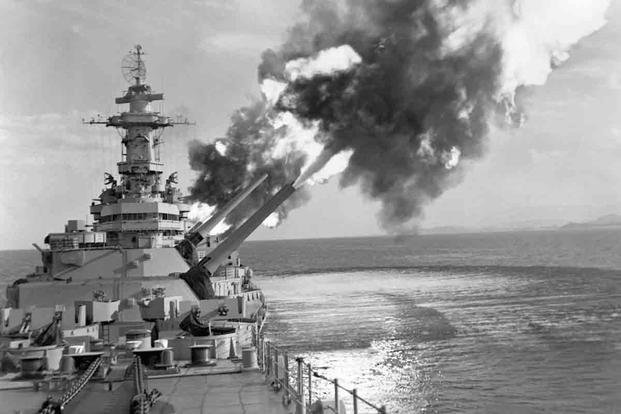The Iowa-class battleship USS New Jersey underwent many modifications in its nearly 50-year history, but there’s one modification it doesn’t really advertise. If you’ve ever been in the “dental storage room” aboard the USS New Jersey, then you’ve seen the ship’s venereal disease treatment room.
In a February 2021 YouTube video, the uncomfortable-looking curator of the Battleship New Jersey Museum & Memorial went aboard the USS Massachusetts to tour its “social diseases” room to talk about why it was a necessary compartment.
Sexually transmitted diseases have long been a concern for military planners. As early as World War I, the U.S. government and public health agencies waged long and exhaustive education campaigns about communicable diseases and distributed prophylactics in an effort to curb the problem.
An estimated 18,000 troops were taken out of action by VD daily during World War I.
Leading the Horses to Water
During World War II, the Army hyped venereal disease as “the enemy in your pants” and even reported that syphilis had caused the deaths of more than 58,000 people in the United States -- 14% of total World War II deaths.
Despite the informational campaign associated with venereal diseases, of which syphilis and gonorrhea were among the most widespread, soldiers and sailors still reported for treatment. Aboard the USS New Jersey, the line for sailors seeking treatment for VD started getting in the way of regular sick-call lines. It was moved to the dental treatment area one deck above.

By the 1980s, the area had been converted into a dental storage room. Since it had plumbing, museum curators were curious about the room’s original function, so they went back to the blueprints to find out why.
It turned out that like the South Dakota-class USS Massachusetts, the Iowa-class battleships like the New Jersey featured a VD treatment room as standard medical practice. By the start of the Second World War, the number of troops out of action from VD dropped to 606.
Treatment and Prevention
The War Department began issuing condoms at the rate of six per person, per month and launched an overwhelmingly large information campaign to warn against the dangers of “easy women” and not using a preventative measure when with those “easy women.” Warnings and notices were posted everywhere from barracks to K-rations. Getting treated for VD was free but often came with an Article 15.
By 1941, the War Department was treating all bacterial infections with sulfonamides, an early but effective set of drugs with antibiotic properties that are still in use today. But in 1941, a gonorrhea infection could lead to a soldier (or sailor) being hospitalized for as long as 22 days. The soldier could still be infectious but asymptomatic.
Penicillin as a treatment for VD was introduced to the U.S. military in 1943. It was so effective against the most common sexual diseases that it allowed the USS New Jersey to turn its “social diseases” clinic into a storage area for the ship’s dentist.
-- Blake Stilwell can be reached at blake.stilwell@military.com. He can also be found on Twitter @blakestilwell or on Facebook.
Want to Learn More About Military Life?
Whether you're thinking of joining the military, looking for post-military careers or keeping up with military life and benefits, Military.com has you covered. Subscribe to Military.com to have military news, updates and resources delivered directly to your inbox.
















